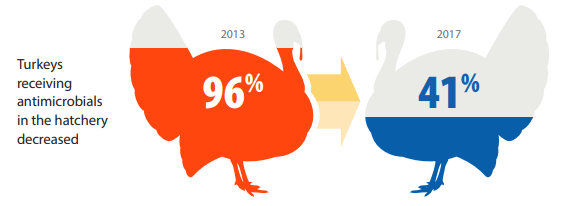The Truth About Antibiotics
Turkey growers and processors are committed to the wellbeing of their flocks and the safety of the food supply. When growers use antibiotics, they do so according to label and dosing instructions approved by the U.S. Food and Drug Administration (FDA) and under the care of a veterinarian.
To learn more, check out Turkey Truths: The Truth about Antibiotics.
The section below outlines the specific stance of the National Turkey Federation on judicious antibiotic usage:
- A significant portion of antibiotics that are used in animal production are only used on animals. Those medications are not used in people. Many of the most important antibiotics for people have limited or no use for farm animals.
- FDA’s Center for Veterinary Medicine approves all antibiotics for farm animals. This oversight includes limiting what is given, dosage and the treatment period to ensure the safety of animals and humans. FDA regulations also require medications be out of an animal’s system before it goes to market. USDA conducts routine screening of meat and poultry for residue under the National Residue Program (NRP) to ensure products are safe for consumption.
- Antibiotics remain effective against disease. Antibiotics have been safely used in animal agriculture for many years to treat and control disease in animals and improve the animal’s overall health. Several layers of protection have been put in place to ensure that animal antibiotics do not affect public health. In 2013, FDA released a statement calling the definition of superbugs “inaccurate and alarmist” if treatable by commonly used antibiotics.
- The turkey industry is taking steps to ensure judicious use of antibiotics. NTF continues to lead efforts in the animal agriculture community on antibiotic data collection and antibiotic stewardship. As part of this effort, NTF partnered with the U.S. Poultry and Egg Association and Dr. Randy Singer of the University of Minnesota to voluntarily collect antibiotic use data for the turkey industry. This report documents substantial reductions in the use of most medically important antimicrobials in turkey production, regardless of method of administration, over a five-year timeframe. Keeping animal health and welfare in mind as a top priority, this reduction was achieved through developments in new technologies, enhanced management practices and increased biosecurity principles.
- Specifically, the approximate percentage of turkey poults placed that received hatchery antimicrobials significantly decreased from 96 percent in 2013 to 41 percent in 2017.
- Specifically, the approximate percentage of turkey poults placed that received hatchery antimicrobials significantly decreased from 96 percent in 2013 to 41 percent in 2017.

